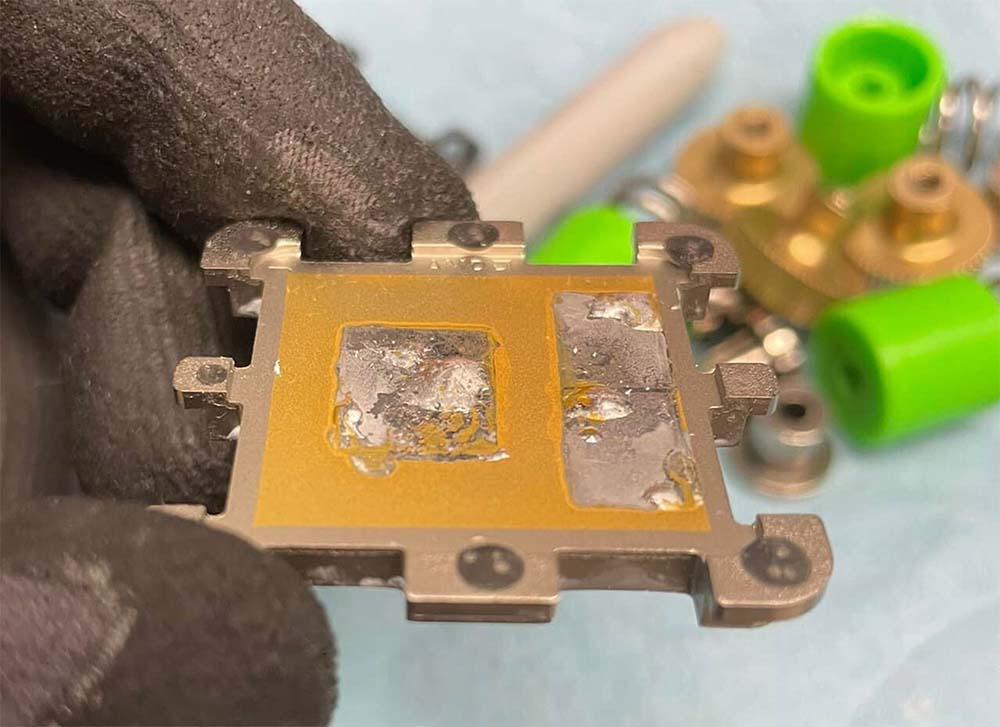They are already testing the overclock of the AMD Ryzen 7000, and one of the techniques is the delidding, having photos in this case to prove it. An overclocker gives us a picture of what’s underneath the IHS.
Delidding is the practice whereby the IHS is removed from the processor to change the thermal compound that the die has in order to improve heat transfer and achieve greater coolness. It used to be easier, but since they come sealed it’s almost impossible and even dangerous. AMD has already sent samples of cracks in this practice, and a photo has been seen.
AMD Ryzen 7000 should meet the target overclock
A few weeks ago, we saw how the “bosses” of AMD assured us that making overclock the Ryzen 7000 above 5.0 GHz will be a simple thing. This has cost Intel a lot, could it be because of the 14nm? We won’t know until the Zen 4’s with 5nm land on our test bench to see if it’s true.
We have read up to 5.3 GHz on some Zen 4 chips, even though the maximum frequency would be 5.85 GHz. What we can’t deny is that AMD is collaborating with overclockers to see the performance of their processors in order to see their stability. Hence the picture you see above shows the 2 CCDs and the iOD soldered to the die.
You will have seen that the Ryzen and Intel are very well sealed, something that seems to continue in this vein with the Zen 4 CPUs. The opposite would make it easier for many overclockers who do delidding, it might even have prompted there to be shops selling processors with delidding done for those who want to install the CPU and turn it up a notch without getting their hands dirty.
That said, the processors come so “overclocked” from the factory that Silicon Lottery had to close down because it wasn’t viable. They were in the business of selling processors with good silicon for those who wanted to get the best possible unit for overclocking. GHz increases have meant that you can’t get many extra MHz out of today’s CPUs, so it made no sense to sell chips with better silicon.
Looking at the CCD and IOD area, they seem to be attached to the IHS and the delid could damage them severely. It is possible that what you see in the photo is solder residue and nothing else, although we do not know yet. As TechPowerUP points out, whoever uploaded this should not have done so the author’s name will not be put.
